Immersing oneself in the world of Japan’s McDonald’s Teriyaki Burger is an inviting and mouth-watering journey through cultural significance, culinary craftsmanship, and gastronomical enthusiasm. As a beloved fast-food staple in Japan, the Teriyaki Burger has amassed a great following, attracting both tourists and locals alike. This fascinating exploration seeks to uncover the history and essence of this popular burger variant, delving into the intricacies of its creation, and examining the cultural impact it has on Japan’s fast-food industry.
History of Teriyaki Burger in Japan
The Teriyaki Burger first made its appearance in Japan in 2000, initially introduced by McDonald’s as a limited-time offer. This unique menu item was developed in response to the growing demand for a diverse range of food options that catered to the culturally enriched taste buds of the Japanese people.
The Teriyaki Burger is essentially a combination of two culinary classics – an American-style burger infused with the flavor of Japan’s well-known teriyaki sauce. The sandwich features a thick, juicy pork patty coated in a savory, sweet teriyaki sauce, topped with lettuce and mayonnaise, all between a soft bun.
A key factor contributing to the success of McDonald’s Teriyaki Burger in Japan is the use of teriyaki sauce. Teriyaki is a traditional Japanese cooking technique and flavor, which involves grilling or broiling ingredients while they are brushed with a glaze made of soy sauce, sugar, and mirin (rice wine). Teriyaki sauce is typically used for cooking fish, poultry, and meat, and its inclusion in the burger gives it a distinct taste that sets it apart from other McDonald’s offerings.
In addition to the unique taste, the Teriyaki Burger has become symbolic of McDonald’s adaptability in the global market, showcasing its ability to create products that cater to local tastes. It highlights the importance of understanding cultural differences and preferences when expanding a business internationally. Furthermore, the burger’s successful integration into the Japanese market reflects the blending of culinary traditions and how classic dishes can be reinterpreted into new and innovative menu items.
McDonald’s Japan has introduced menu items tailored to the country’s culture and dietary preferences, such as the Teriyaki Burger, Ebi (shrimp) Filet-O, Chicken Tatsuta Sandwich, and the Mega Mac, which features four beef patties. These items demonstrate McDonald’s commitment to satisfying the tastes of its customers and adapting to regional preferences, ensuring the fast-food giant remains a popular dining destination in Japan and around the world.
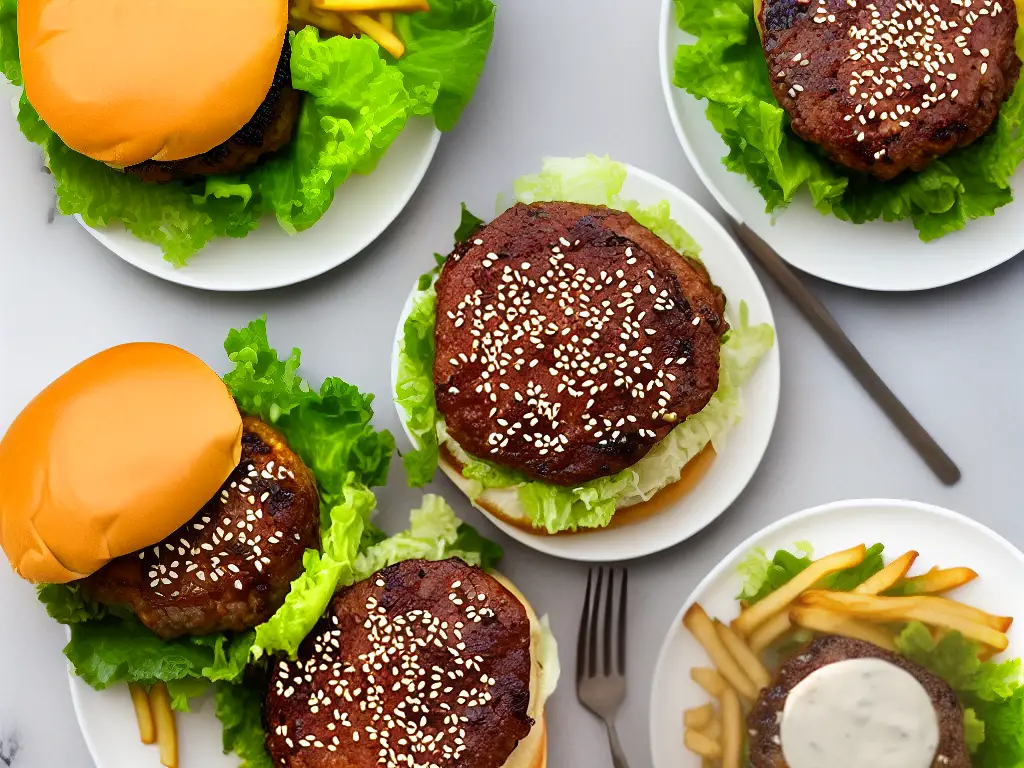
Teriyaki Sauce and its Role in the Burger
The standout Japan McDonald’s Teriyaki Burger features a key ingredient: teriyaki sauce, a traditional Japanese condiment offering a sweet and savory flavor combination. Composed of soy sauce, sugar, mirin (a sweet Japanese cooking rice wine), and often seasoned with ginger and garlic, teriyaki sauce creates a thick and glossy texture, providing a perfect balance of flavors. This versatile sauce marries well with various dishes, particularly grilled or fried meats, making the Teriyaki Burger a delightful addition to the menu.
The process of creating teriyaki sauce typically begins by combining equal parts of soy sauce and sugar in a saucepan. The ginger and garlic, usually grated or minced, are added for extra depth in the flavor profile. Mirin plays a crucial role in giving teriyaki sauce its iconic sheen, as well as contributing to its sweetness. Once the ingredients are mixed together, they are heated gently over low-medium heat, allowing the sugar to dissolve and the sauce to reduce until it thickens, thus creating a syrupy glaze. It is essential not to overcook the sauce, as this will result in it becoming too thick and sticky, making it difficult to coat the protein evenly.
In the context of Japan McDonald’s Teriyaki Burger, the teriyaki sauce is used as a marinade for the protein, typically a meat patty, fish fillet, or even a chicken breast. In this case, McDonald’s burgers feature a pork patty that has been cooked to perfection, retaining moisture and succulence. As teriyaki sauce is cooked, it infuses the patty’s surface with its sweet-savory flavors, leaving a caramelized layer of delicious teriyaki goodness. Furthermore, some additional sauce is drizzled or generously brushed onto the patty just before assembling the burger, ensuring that every bite is packed with that rich, intense teriyaki flavor.
The combination of teriyaki sauce with additional burger toppings is what sets the Japan McDonald’s Teriyaki Burger apart. The sweet and tangy teriyaki sauce melds beautifully with the crisp lettuce and creamy mayonnaise typically found in the burger. The addition of these contrasting textures and flavors accentuates the overall deliciousness of the dish, while the pillowy bun envelops it all, creating a medley of flavors that is sure to transport your taste buds straight to Japan with every bite.
The Japan McDonald’s Teriyaki Burger is a unique fusion of traditional Japanese flavors and the classic American fast food burger. One of the key ingredients that sets it apart from other burgers is the teriyaki glaze used. This deliciously sticky, sweet and savory sauce is made by combining soy sauce, sugar, mirin, and sake. It is this distinct teriyaki flavor that has made the burger so popular among both Japanese and global audiences.

Ingredients and Components of the Teriyaki Burger
In conclusion, the teriyaki sauce truly is the shining star of the Japan McDonald’s Teriyaki Burger. Its simplicity in ingredients and preparation allows it to deliver a burst of flavor that celebrates traditional Japanese cuisine. A perfectly cooked pork patty smothered in teriyaki sauce, complemented with fresh toppings and condiments, makes for an unforgettable experience and is a testament to the harmonious union of fast food with Japanese culinary traditions.
Another important component of the Teriyaki Burger is the patty itself. Unlike the regular beef patties found in most McDonald’s burgers, the Teriyaki Burger features a juicy pork patty. This difference in choice of meat complements the teriyaki sauce and brings out the unique flavors of the burger. The pork patty is cooked to perfection, ensuring that it retains its natural juices, which further enhances the overall taste of the burger.
The toppings used in the Teriyaki Burger also contribute to its incredible flavor profile. Fresh, crisp lettuce provides a refreshing contrast to the savory teriyaki sauce and juicy pork patty, while creamy mayonnaise adds a hint of indulgence to the burger. The combination of these toppings creates a harmonious balance of textures and tastes, ensuring that every bite of the Teriyaki Burger is a delightful experience.
The bun plays an essential role in holding all the delicious components of the Teriyaki Burger together. It is a soft, slightly sweet bun that complements the flavors of the burger without overpowering them. It has enough sturdiness to hold up against the saucy teriyaki glaze and juicy pork patty, ensuring that the burger can be easily enjoyed without making a mess.
Japan McDonald’s Teriyaki Burger offers a unique and exciting dining experience with its primary components, complemented by the customization of various toppings and condiments. Customers can tailor their meal to their preferences by adding cheese, pickles, onions, or swapping the regular mayo for the Japanese-style Kewpie mayo, which boasts a richer, creamier taste. This element of personalization encourages customers to continue returning to try new and unique combinations, elevating the Teriyaki Burger experience.
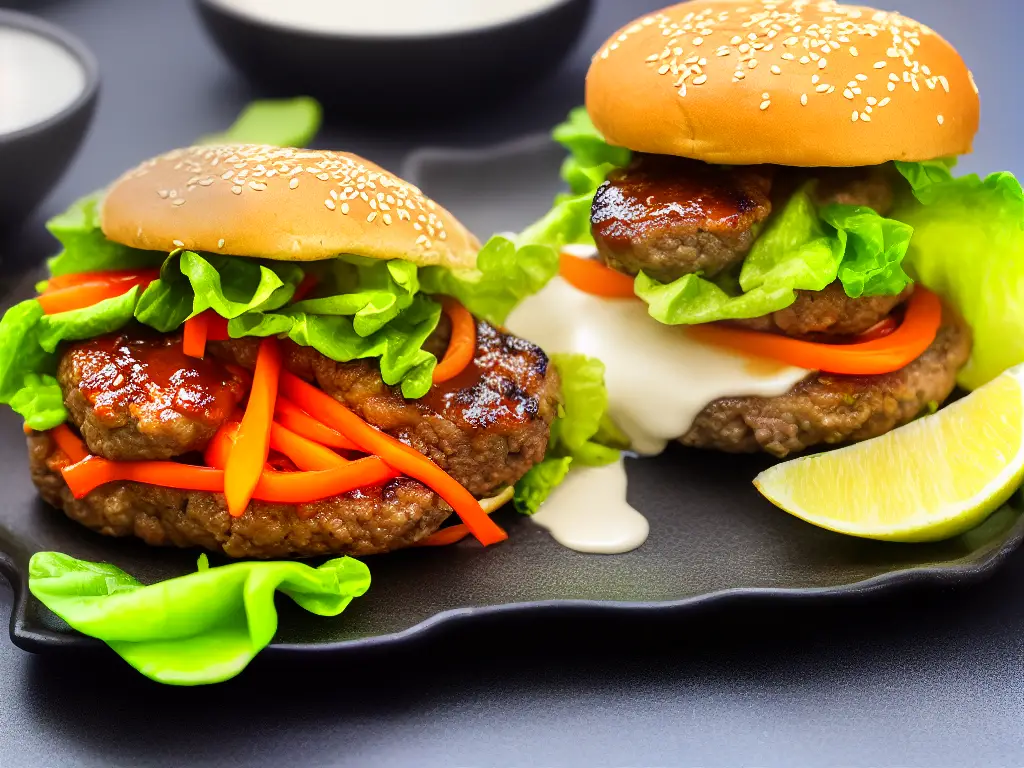
Cooking Techniques for the Teriyaki Burger
To master the art of making the perfect Japan McDonald’s Teriyaki Burger, particular attention should be given to seasoning the meat patties. The star of the dish is the teriyaki sauce, a blend of soy sauce, mirin, sugar, and sake. Preparing the sauce ahead of time allows the flavors to meld, enriching the overall taste. Marinate the beef patties in the sauce for at least 30 minutes or up to an hour in the refrigerator to ensure optimal flavor absorption. Additionally, keeping a close eye on cooking time and temperature is crucial. Overcooking may result in a dry, tough burger, while undercooking can be unsafe for consumption.
Grilling the teriyaki burger patties is a crucial step in achieving the distinctive taste and texture associated with Japan McDonald’s Teriyaki Burger. Use either a griddle, grill, or a cast-iron skillet, to ensure an even heat distribution and cooking. Over medium-high heat, place the marinated patties onto the cooking surface and cook for 3-4 minutes on each side, while basting with more teriyaki sauce during the cooking process. This not only adds more flavor, but it also creates a caramelized outer crust, which is the hallmark of a good teriyaki burger.
Another important aspect of preparing the perfect Teriyaki Burger is the choice of bread and toppings. In Japan McDonald’s, the Teriyaki Burger traditionally uses a lightly toasted sesame seed bun, which adds a subtle nuttiness and crunch to the burger. As for toppings, you’ll often find shredded lettuce, tomato slide, and mayonnaise to provide a balance of fresh, creamy, and tangy flavors. Some versions might also include a slice of cheese or grilled pineapple as an additional layer of flavor, but the basics remain largely the same.
Creating a similar experience at home requires attention to detail, not only in the techniques used but also in the choice of ingredients. Freshness is key when it comes to vegetables, so make sure to have crisp lettuce and ripe tomatoes on hand. For the bun, either make it yourself or look for a good-quality bakery that offers sesame seed buns. Additionally, the type of beef used in the patty also matters; choose a blend with a good fat content (around 20%) to ensure a juicy and flavorful burger.
As an enthusiast or hobbyist seeking to master the art of recreating the Japan McDonald’s Teriyaki Burger at home, it is crucial to focus on the right cooking techniques and ingredient choices for both the patty and the toppings. Striking a balance in flavors and textures, such as the sweet and savory teriyaki sauce, the caramelized crust on the patty, and the fresh and crunchy vegetables, is key in achieving an authentic and delectable taste that will transport you to a McDonald’s in Japan with every bite.
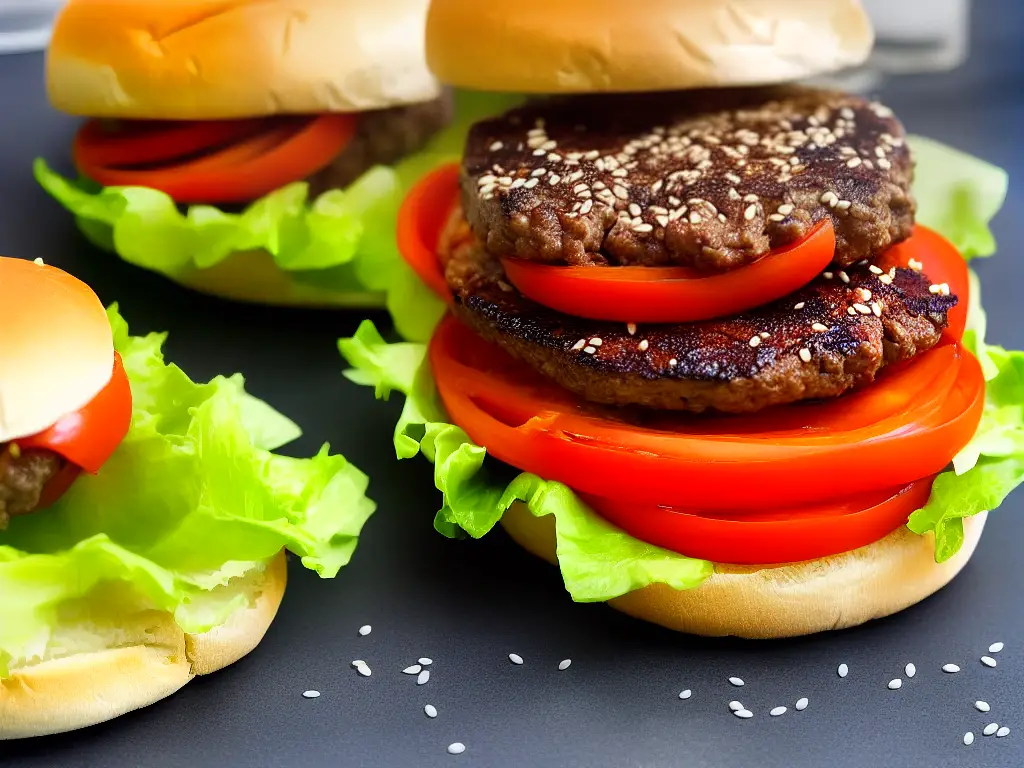
Teriyaki Burger Variations and Recipes
Diving deeper, the Teriyaki Burger is a popular menu item in Japanese McDonald’s outlets that skillfully combines traditional culinary influences with a modern fast-food approach. Teriyaki cooking, characterized by broiling or grilling food in a sauce made from soy sauce, mirin, and sugar, infuses a distinct and delightful flavor into the classic burger experience. By following these principles, you can successfully create a mouthwatering Teriyaki Burger that rivals its Japanese origins.
In Japan, McDonald’s Teriyaki Burger is generally made using a pork patty, teriyaki sauce, lettuce, and mayonnaise. However, there are many variations and creative adaptations of the Teriyaki Burger that can be explored and experimented with at home.
Substituting the Protein Source
One interesting variation of the Teriyaki Burger involves substituting the pork patty with a chicken or beef patty. You can marinate the alternative patty in teriyaki sauce to give it extra flavor. In addition to swapping the protein source, you can also incorporate classic Japanese ingredients such as shiitake mushrooms, pickled ginger, or wasabi mayonnaise to give the burger an even more distinctive Japanese flair.
Unique Adaptations
Another unique adaptation of the Teriyaki Burger can be found in the Mos Burger chain, also popular in Japan. Here, the burger is served with a teriyaki-glazed beef patty, lettuce, a thick slice of tomato, and a special Mos Burger sauce. To try this interesting take on the Teriyaki Burger at home, combine equal parts ketchup, mayonnaise, and Japanese-style Worcestershire sauce to create the Mos Burger sauce. After assembling the burger, glaze the patty with teriyaki sauce and add the lettuce, tomato, and sauce for a delightful twist on the classic.
Plant-Based Options
Vegetarians and vegans can also enjoy the flavors of a Teriyaki Burger by using plant-based proteins. Replace the pork patty with a seasoned tofu steak or a plant-based burger patty as a meatless substitute. You can also use additional toppings like avocado, cucumber, or red onion to further complement the flavors of the teriyaki sauce.
Experiment with Buns
For those who are adventurous and willing to get creative in the kitchen, experimenting with different types of buns can add a new dimension to the Teriyaki Burger experience. Instead of using a traditional burger bun, consider utilizing a Japanese-style steamed bun known as ‘Hirata Buns’ or ‘Bao.’ These buns are soft, fluffy, and slightly sweet, which can contrast nicely with the savory flavors of the teriyaki sauce. To make Teriyaki Burger sliders, use smaller steamed buns, and adjust the patty size accordingly. Exploring various renditions and adaptations of the Teriyaki Burger can be a fun and delicious way to enhance the taste of this popular Japanese McDonald’s offering.
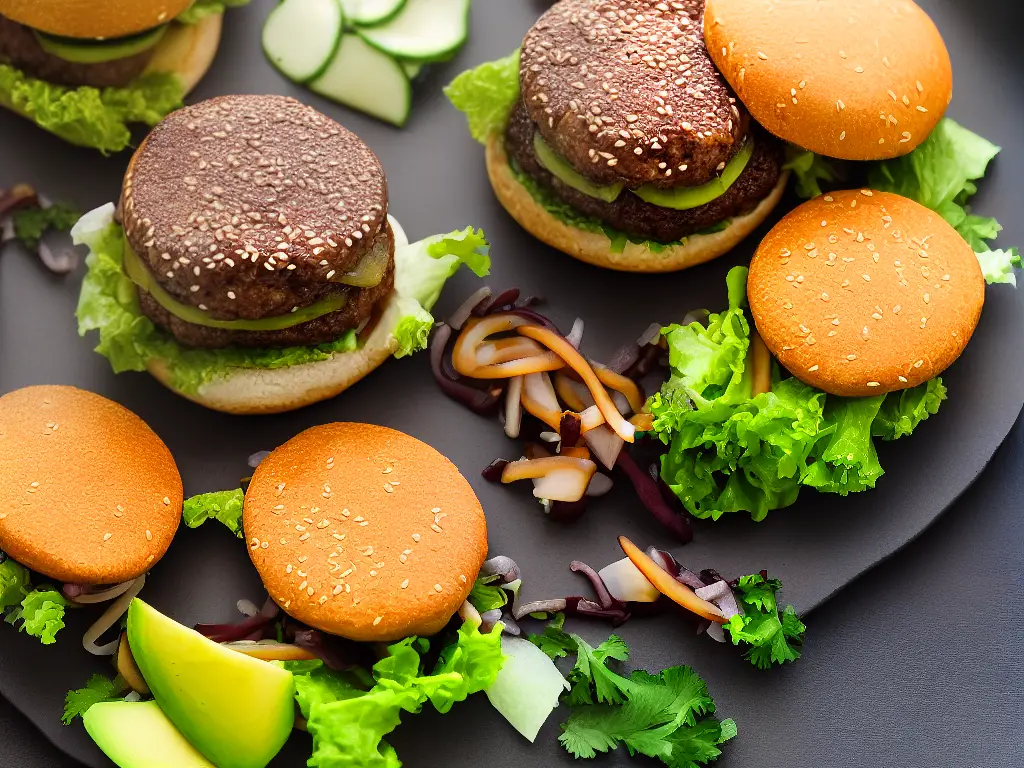
Teriyaki Burger in Japanese Culture
The Teriyaki Burger at McDonald’s in Japan is a perfect example of the fusion of Western and Japanese flavors, which is deeply ingrained in Japanese fast-food culture. The Teriyaki Burger features a juicy beef patty, rich teriyaki sauce, lettuce, and mayonnaise – all packed in a soft bun. Teriyaki sauce, a traditional Japanese ingredient made from soy sauce, mirin, sugar, and sake, is commonly used to marinate and glaze a variety of foods, particularly meats and fish. By incorporating this quintessential Japanese flavor into a Western-style burger, McDonald’s effectively caters to the local palate and introduces a taste of Japanese cuisine to a global audience. Thus, experimenting with different bun types, such as the Hirata Buns mentioned in the previous paragraph, can create unique and exciting variations on this delicious fusion dish, ultimately satisfying any enthusiast or hobbyist’s culinary curiosity.
In Japanese popular culture, the Teriyaki Burger has become a symbol of both nostalgia and modernity. Its appearance in various media, including TV shows, anime, and movies, often reflects youth culture and the fascination with Western fast-food chains. McDonald’s Teriyaki Burger manages to bridge the gap between traditional Japanese culture and the ever-evolving modernization of Japan. This fusion of flavors has become an integral part of the nation’s fast-food scene and serves as a reminder of the country’s versatility and adaptability to international influences.
The popularity of the Teriyaki Burger also reflects the Japanese consumers’ appreciation for familiar flavors with a unique twist. It demonstrates the value of innovation within the food industry and how incorporating familiar elements can entice customers to try something new. The Teriyaki Burger has become a staple menu item among Japanese McDonald’s customers, and its unique appeal has been solidified by the limited availability of this offering in other McDonald’s locations worldwide.
Fast-food culture in Japan has adapted to cater to local tastes and preferences, creating a balance between maintaining worldwide brand consistency and offering regional specialties. The Teriyaki Burger is just one example of how McDonald’s Japan has successfully embedded itself into Japanese culture by integrating traditional flavors and popular ingredients with globally-recognized food items. This approach has also enabled Japanese customers to enjoy the convenience and affordability of fast-food outlets while still indulging in familiar and comforting tastes.
The longevity of the Teriyaki Burger’s popularity at Japan McDonald’s highlights the adaptability and open-mindedness of Japanese food culture. Embracing foreign food concepts while preserving the essence of traditional cuisine, the Teriyaki Burger serves as an icon of Japan’s love for innovation, open-mindedness, and the blending of different cultures and flavors. The success of this unique burger has inspired other international fast-food chains to create similar regionally-inspired menu items, further enriching the fast-food culture of Japan and cementing its place in the hearts of consumers.
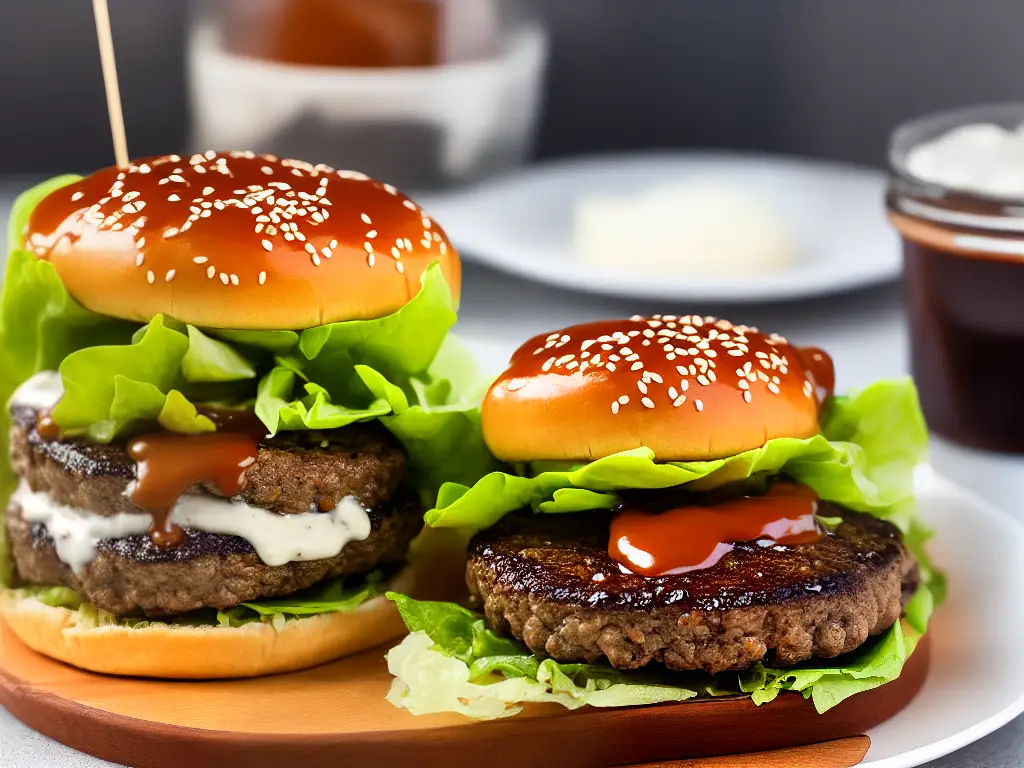
Challenges and Criticism of the Teriyaki Burger
However, the Teriyaki Burger faces challenges from competition within the fast-food industry, especially from those offering traditional Japanese foods. Since it is a fusion of Western and Japanese cuisine, it may struggle to appeal to customers who prefer authentic Japanese flavors. Fast-food establishments like Mos Burger, which offers a similar Teriyaki Burger with a more localized taste, have become strong competitors in this market. The increasing prominence of sushi and other traditional cuisine-related fast-food chains may also overshadow the Teriyaki Burger’s success, posing as a potential threat to its continued popularity.
Another challenge facing the Teriyaki Burger is the perception that fast food is unhealthy, particularly as growing concerns about the links between fast food and obesity, diabetes, and other health issues continue to spread. Japan has long been known for its healthy eating habits and its citizens’ general consciousness about nutrition. As a result, some customers may be wary of consuming the Teriyaki Burger, which features a high-calorie sauce made from soy sauce, sugar, and other additives.
Furthermore, Japan’s McDonald’s has faced controversies in the past regarding food safety, which may lead consumers to question the quality of their products, including the Teriyaki Burger. In 2014, the fast-food chain faced a scandal involving expired meat imported from China. Although the issue was addressed and resolved, such incidents can impact consumer trust, making the Teriyaki Burger a less attractive option for those seeking a reliable and safe fast-food experience.
Criticism can also be found surrounding the Teriyaki Burger’s environmental impact. The high consumption of meat, particularly beef, has been linked to deforestation, greenhouse gas emissions, and resource consumption. McDonald’s has faced criticism for its role in promoting meat-heavy diets, and the Teriyaki Burger is no exception to these concerns. As consumers become more environmentally conscious, they may opt for plant-based or more sustainable food choices, posing a challenge for the Teriyaki Burger’s continued success.
Lastly, the Teriyaki Burger may face challenges in adapting to changing consumer preferences, particularly with the rise of plant-based alternatives. Today, many fast-food chains are offering vegetarian and vegan versions of their popular menu items. For the Teriyaki Burger to remain competitive and appealing in a shifting market, it must consider addressing these preferences by potentially offering plant-based alternatives or adjusting its recipe to cater to a wider range of consumers.
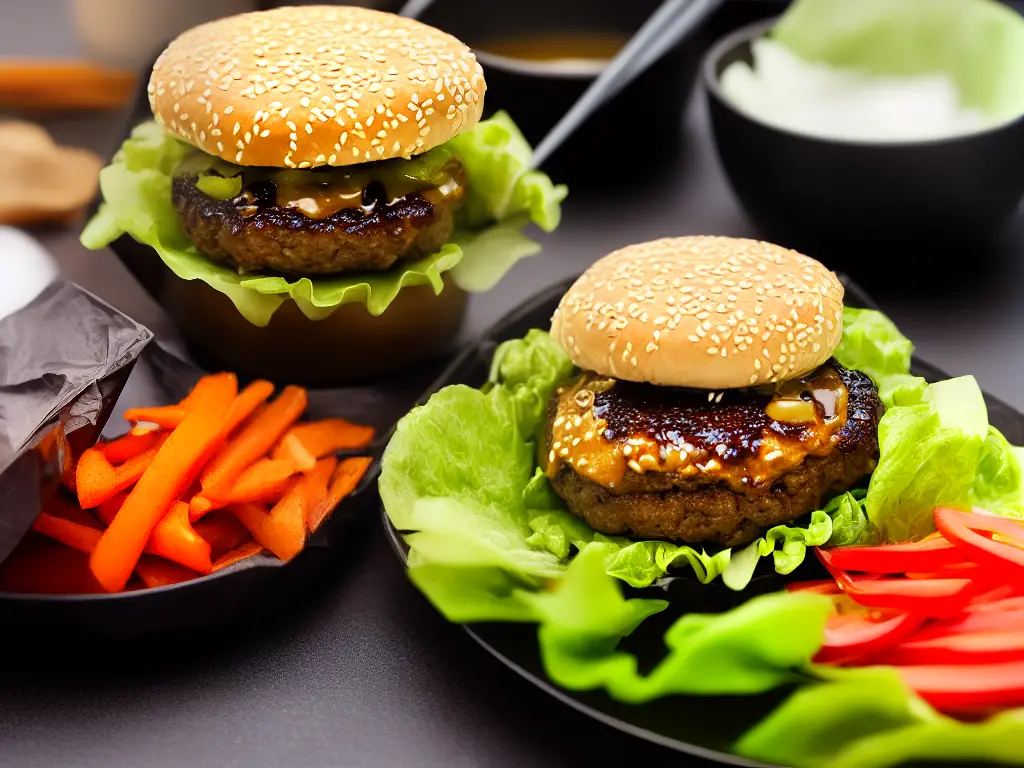
Throughout this exploration, the depth and complexity of the Teriyaki Burger phenomenon has been extensively examined, revealing the importance of embracing and understanding the burger in both culinary and cultural contexts. By delving into the history, ingredients, cooking techniques, variations, cultural significance, and potential challenges of the Teriyaki Burger, this comprehensive endeavor provides a newfound appreciation for the creative and tasty brilliance of Japan’s McDonald’s Teriyaki Burger. May this analysis spark inspiration to delve deeper into the world of global culinary delights and encourage further exploration into the diverse and ever-evolving landscape of fast-food culture.
